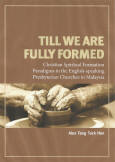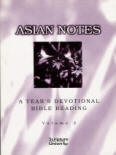To me, our
10 days STM Turkey Study Trip 2013 was like being caught in a tornado and dropped into the land of Oz (no, not Australia). There are these periods of
hurried packing and unpacking, been awoken at unearthly hours, and hours of
boredom on planes and buses. I do not believe I have seen so many different types
of stones in ruins, and toilets in such a short period of time in my life
before! These stones of ruins (not the toilets) carry an ambiance sense of
antiquity and spiritual power of ancient gods such as Artemis and Apollo.
Artemis is the
daughter of Zeus and Leto, and the twin sister of Apollo. She was the Hellenic
goddess of the hunt, wild animals, wilderness, childbirth, virginity and
protector of young girls, bringing and relieving disease in women. Artemis was
one of the most widely venerated of the ancient Greek deities. Her Roman
equivalent is Diana. However her influence was so powerful that the ancient
Romans continued to worship her as Artemis as evidenced by Artemis Ephesus in
ancient Ephesus. Artemis Ephesus predates ancient Greece and may have even
earlier roots in the ancient bear cults. Artemis Ephesus is also the Mother
goddess of Anatolia, the ancient Romans being syncretic in their approach to
religion, merging the Greek and Mesopotamian deities.
Her brother
Apollo is recognized as a god of light and the sun, truth and prophecy,
healing, plague, music, and poetry. As the patron of Delphi, Apollo was the
prophetic deity of the Delphic Oracle. Medicine and healing are associated with
Apollo mediated through his son Asclepius, yet Apollo was also seen as a god
who could bring ill-health and deadly plague. As the leader of the Muses and
director of their choir, Apollo functioned as the patron god of music and
poetry.
Between the
two of them, they control all aspects of human existence: business, government,
media, arts and entertainment, education, the family and religion (also known
as the seven mountains or spheres of influences of culture). As gods, they also
control the fate of human beings (souls). The cult of emperor worship during
the latter part of the history of the Roman Empire is another manifestation of
these powers. These deities and their cultic institution of worship are the
faces of spiritual powers and principalities that early Christians have to face
and struggle against as they seek to follow the demands and worship a
monotheist God. This struggle was intensified when Christianity herself become institutionalized
and political after Constantine.
Walking
among the ruins of Ephesus, Laodicea, Sardis and Hierapolis, I cannot help but
feel the spiritual battles these early Christians have to face as they live in a
culture of the bondage of fear, materialism, hedonism and consumerism. It would
have been a great struggle to be a people that stood apart from influences of these
which Reformed pastor and author Timothy Keller called ‘counterfeit’ gods. The
letters in the Book of Revelation to the seven churches reveal certain aspects
of these struggles. The struggles against the bondage of fear, materialism,
hedonism and consumerism have not changed over the millenniums. The faces of
the powers and principalities have changed but they themselves have not. These
faces are no longer known as temples, agoras, nymphaeums or theaters. Nowadays,
they are recognized as shopping malls, banks, Hollywood, online shopping, multinational
corporations, governments and institutional religiosity. These powers and
principalities are still controlling major sectors of the seven mountains. It
is still a daily struggle for many of us not to follow the seductive ways of
these counterfeit gods.
The
spiritual battle has been ongoing for two millenniums and is still going on. Modern
Turkey which is the cradle of early Christianity and later, part of the Holy
Roman Empire has a population of 74.4 million people in 2011. Of these, only less than 0.2%
is Christians! This shows that the spiritual forces working against God are
still active and powerful. This is a powerful reminder to us to take heel of
the warnings contained in the letters to the churches in Revelation. The
spiritual warfare is still waging all around us. The modern Church ignores this
at her own peril. We are to choose to intentionally walk closer to God, be holy,
reject the seductions of other gods and be in continual communion with the Father,
Son and the Holy Spirit.
Help us, O
Lord, we plea.
amen.
.
Labels: Bible lands, Turkey



















